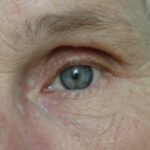Although the sun’s rays feel warm against the skin and they can create a beautiful tan, the long term effects of sun exposure are not so pretty. Time spent soaking up the sun’s rays can come back to haunt you in the form of wrinkles, skin cancers, skin laxity, and skin discolorations. One form of skin discoloration that’s common among enthusiastic sun worshippers are sunspots. These darkly pigmented spots are most commonly seen in middle-aged and older people who have spent a lot of time outdoors. Is there any way to treat sunspots or at least make them less noticeable?
What are sunspots?
Sunspots are areas of skin pigmentation, usually brown in color, on sun exposed areas of the body. These lesions are fairly common can be mistaken for skin cancer in some cases. These discolored areas are usually flat and can sometimes resemble freckles when there are many of them. Sunspots are most commonly seen on the hands, shoulders, and face.
What causes sunspots to form?
When you’re exposed to the sun on a frequent basis, the sun’s ultraviolet rays can stimulate the melanin producing cells known as melanocytes to go into overdrive and produce too much pigment. Sunspots are most commonly seen on fair skinned people who are sun sensitive and freckle easily.
Is there a way to treat sunspots once they’ve formed?
The very best treatment of sunspots is preventing them in the first place. This is done by wearing a sunscreen that blocks both UVA and UVB light when you’ll be spending time outdoors. Anyone who has sunspots should invest in a good sunscreen and wear it religiously to avoid future pigmentation problems and reduce the risk of skin cancer.
The best way to treat sunspots once you have them is laser treatment by a qualified dermatologist or plastic surgeon. Although liquid nitrogen therapy has been used on sunspots in the past with mixed results, laser can removes these spots cleanly whereas liquid nitrogen causes the areas to fade over several weeks. In some cases, use of liquid nitrogen can cause the pigmented areas to turn permanently white.
Some doctors will prescribe bleaching agents containing an ingredient called hydroquinone, but the success rate is relatively low with this treatment and when it does help to treat sunspots it can take several months to see any real change.
Other ways to treat sunspots include the use of prescription strength retinoids such as Retin-A which may cause fading over time and the use of chemical peels performed by a dermatologist or plastic surgeon. Although some people use home remedies such as lemon juice or white vinegar to fade sunspots, there’s no strong evidence to support these treatments.
If you want to treat sunspots, laser treatment is probably the most effective, but also the most expensive. If you want a less costly option, a trial with Retin-A may be worth a try. Retin-A can be prescribed for you by a dermatologist.



